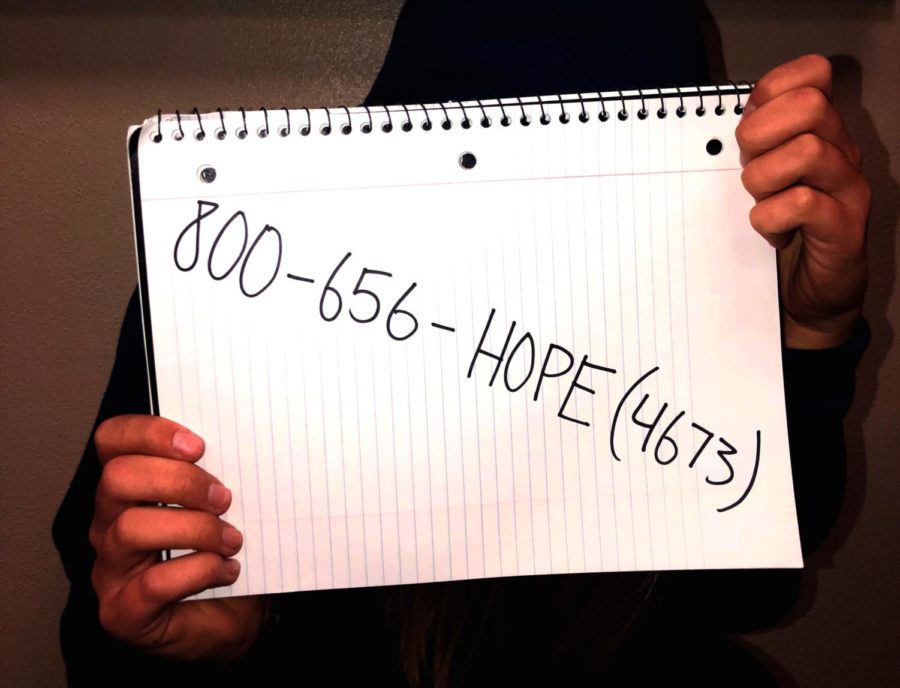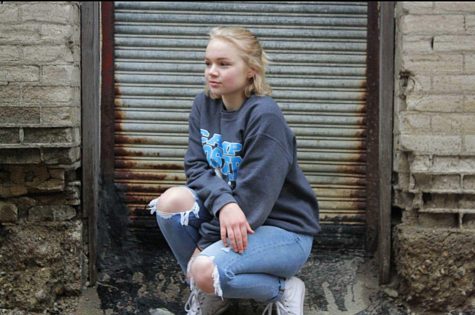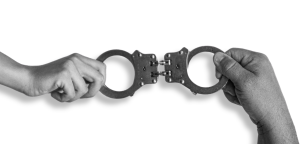It’s time to talk
The RAINN national sexual assault hotline connects with victims with people who can help them in many different ways.
October 22, 2018
From the first cat call someone receives to the court hearing of their assailant, sexual assault and rape victims get little to no justice in the U.S.
Sexual assault and harassment impact more of the population than the public are led to believe.
According to the National Sexual Violence Resource Center (NSVRC), in the U.S., one in three women and one in six men experienced some form of contact sexual violence in their lifetime. One in five women and one in 71 men will be raped at some point in their lives.
An anonymous LHS student experienced sexual assault when they were at a party in eighth grade.
“It happened at one of my former friend’s house when we were having a party, there was no drinking involved,” said the student.
The student did not report the incident for fear of not being taken seriously.
“I didn’t report because it was one of my close friends and they were older than me, so I thought that people would think I was lying or I would ruin my reputation as an athlete,” said the student.
When students experience sexual assault in school, they are expected to report it to school counselors or another person of authority. LHS counselors Matt Meyers and Tanielle Sylvester are familiar with sexual assault at school as they typically receive a few reports a month.
“On occasion we do [get reports], maybe like once or twice a month, fortunately not super often and hopefully this speaks to the fact that it’s not happening as much, but it may also be more so that sexual assaults just typically don’t get reported as well,” said Meyers.
Unfortunately, many incidents of sexual violence are never reported; 63 percent of sexual assaults are not reported to police. Rape is the most underreported crime, and students often never report it.
“For a lot of people, I think shame keeps them from reporting even if it’s not their fault.The whole notion of shame that surrounds sexual assault I think keeps a lot of people from reporting it,” said Meyers. “And then you’re seeing now, even with the news and stuff, that those who do report it oftentimes get dragged through the mud for reporting it, depending on how much of a high profile situation it is, depending on who the assailant is and those kinds of things. So yeah, is there more sexual assault happening than gets reported? Absolutely.”
Tanielle Sylvester, another LHS counselor, also receives a few reports a month.
“I would estimate that I have one to two students per month stop in to report some type of sexual harassment and/or assault,” said Sylvester.
Victims of assault have to be brave to come forward. It can be uncomfortable and sometimes scary to let someone know if something has happened.
“I think it is uncomfortable for many people to talk about sexual things with an adult, or even a peer, so I do believe sexual harassment is under reported. That said, I am hopeful that because more and more brave individuals are coming forward publicly, the conversation and culture is changing,” said Sylvester.
According to RAINN, many people who don’t report have valid reasons for not doing so such as fearing retaliation from the perpetrator, not wanting to get the perpetrator in trouble or they believed the police would not do anything to help.
81 percent of women and 35 percent of men also report significant short-term or long-term impacts such as Post-Traumatic Stress Disorder.
Even though so many people are affected by sexual violence and rape in their lives, perpetrators of such crimes often are not faced with the appropriate consequences. According to RAINN, out of every 1,000 rapes, 994 perpetrators will walk free, 310 will be reported to police, 57 reports lead to arrest, 7 cases will result in a felony conviction and a mere six rapists will be incarcerated. The average time these convicts will serve in prison is 48 months.
Many times people bring up the false reports that have been filed. While these false accusations do happen, the average percentage is between 2 and 10 percent. According to NSRVC, a study of eight U.S. communities, which included 2,059 cases of sexual assault, found a 7.1 percent rate of false reports. A study of 136 sexual assault cases in Boston found a 5.9 percent rate of false reports. Researchers studied 812 reports of sexual assault from 2000-2003 and found a 2.1 percent rate of false reports. So while false claims are made, it is not nearly as prevalent as the media makes it out to be.
We live in a world where people can’t walk home alone at night without keys between their fingers, or go for a run with earbuds in. Society teaches people to not get raped and to not get assaulted instead of teaching the public to not rape and to not assault. Sexual assault is a frightening thing, however, things like the MeToo movement and the general public perception of the issue is a good sign that it is looking up for previous and potential victims of sexual assault.









